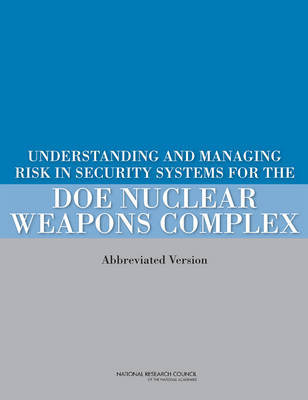A nuclear weapon or a significant quantity of special nuclear material (SNM) would be of great value to a terrorist or other adversary. It might have particular value if acquired from a U.S. facility-in addition to acquiring a highly destructive tool, the adversary would demonstrate an inability of the United States to protect its nuclear assets. The United States expends considerable resources toward maintaining effective security at facilities that house its nuclear assets. However, particularly in a budget-constrained environment, it is essential that these assets are also secured efficiently, meaning at reasonable cost and imposing minimal burdens on the primary missions of the organizations that operate U.S. nuclear facilities.
It is in this context that the U.S. Congress directed the National Nuclear Security Administration (NNSA)-a semi-autonomous agency in the U.S. Department of Energy (DOE) responsible for securing nuclear weapons and significant quantities of SNM-asked the National Academies for advice on augmenting its security approach, particularly on the applicability of quantitative and other risk-based approaches for securing its facilities. In carrying out its charge, the committee has focused on what actions NNSA could take to make its security approach more effective and efficient.
The committee concluded that the solution to balancing cost, security, and operations at facilities in the nuclear weapons complex is not to assess security risks more quantitatively or more precisely. This is primarily because there is no comprehensive analytical basis for defining the attack strategies that a malicious, creative, and deliberate adversary might employ or the probabilities associated with them. However, using structured thinking processes and techniques to characterize security risk could improve NNSA's understanding of security vulnerabilities and guide more effective resource allocation.
- ISBN10 030920884X
- ISBN13 9780309208840
- Publish Date 7 May 2011 (first published 1 January 2011)
- Publish Status Active
- Publish Country US
- Imprint National Academies Press
- Format Paperback
- Pages 30
- Language English
